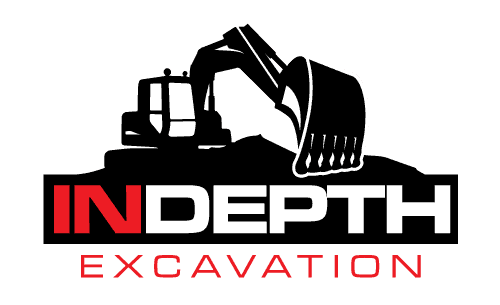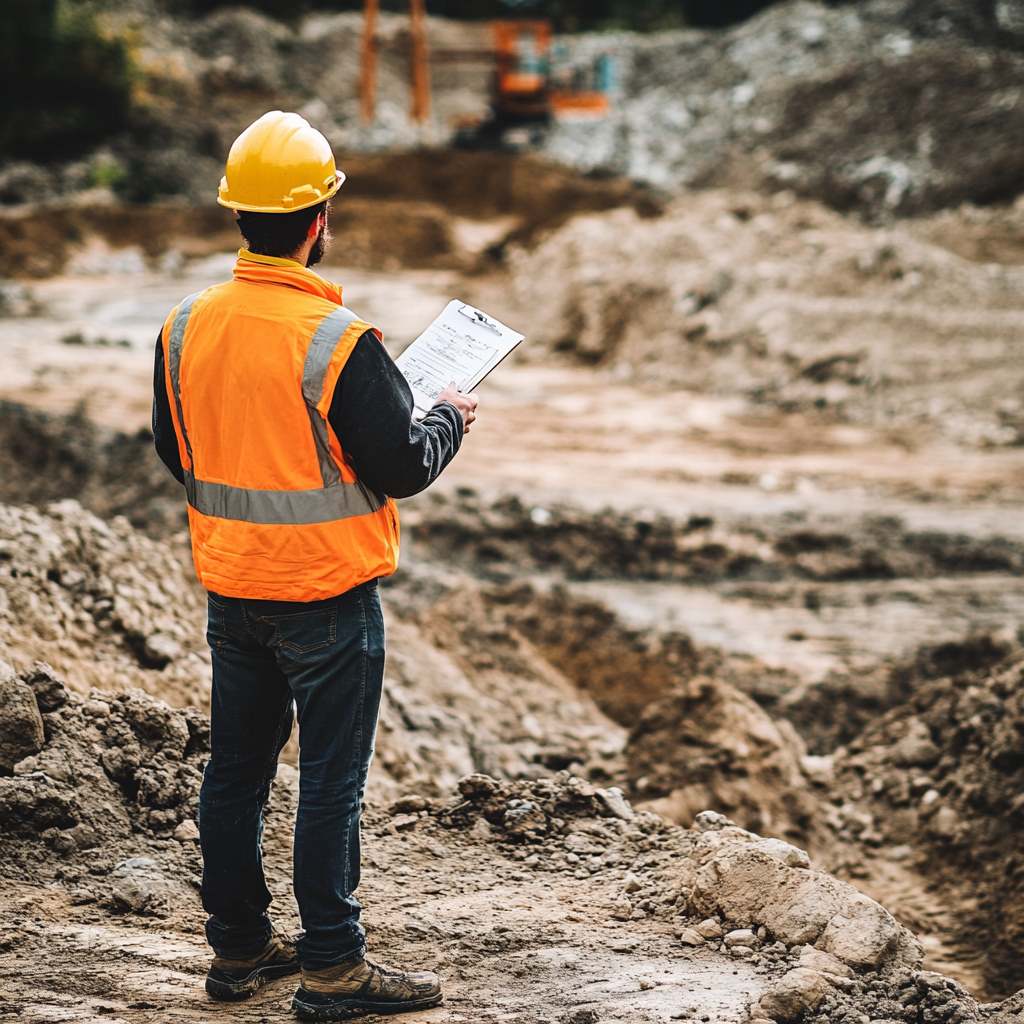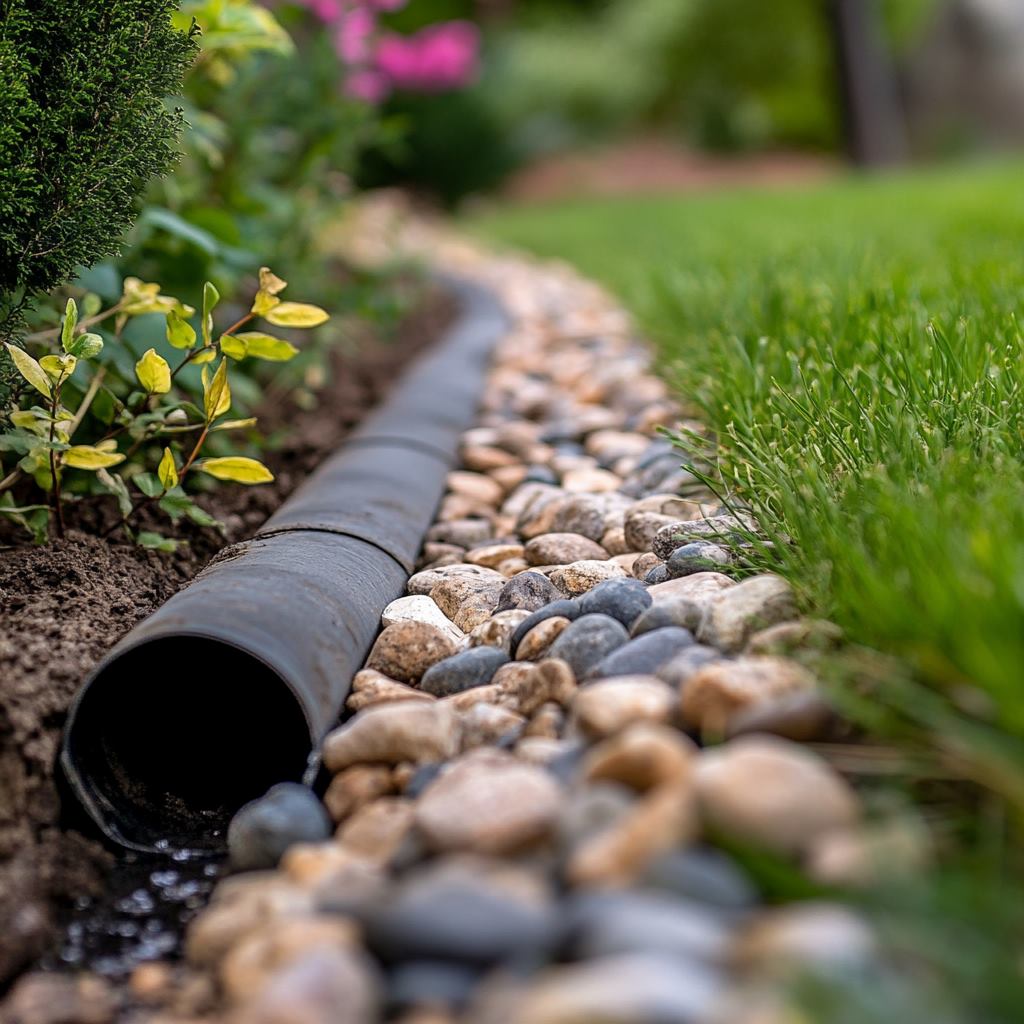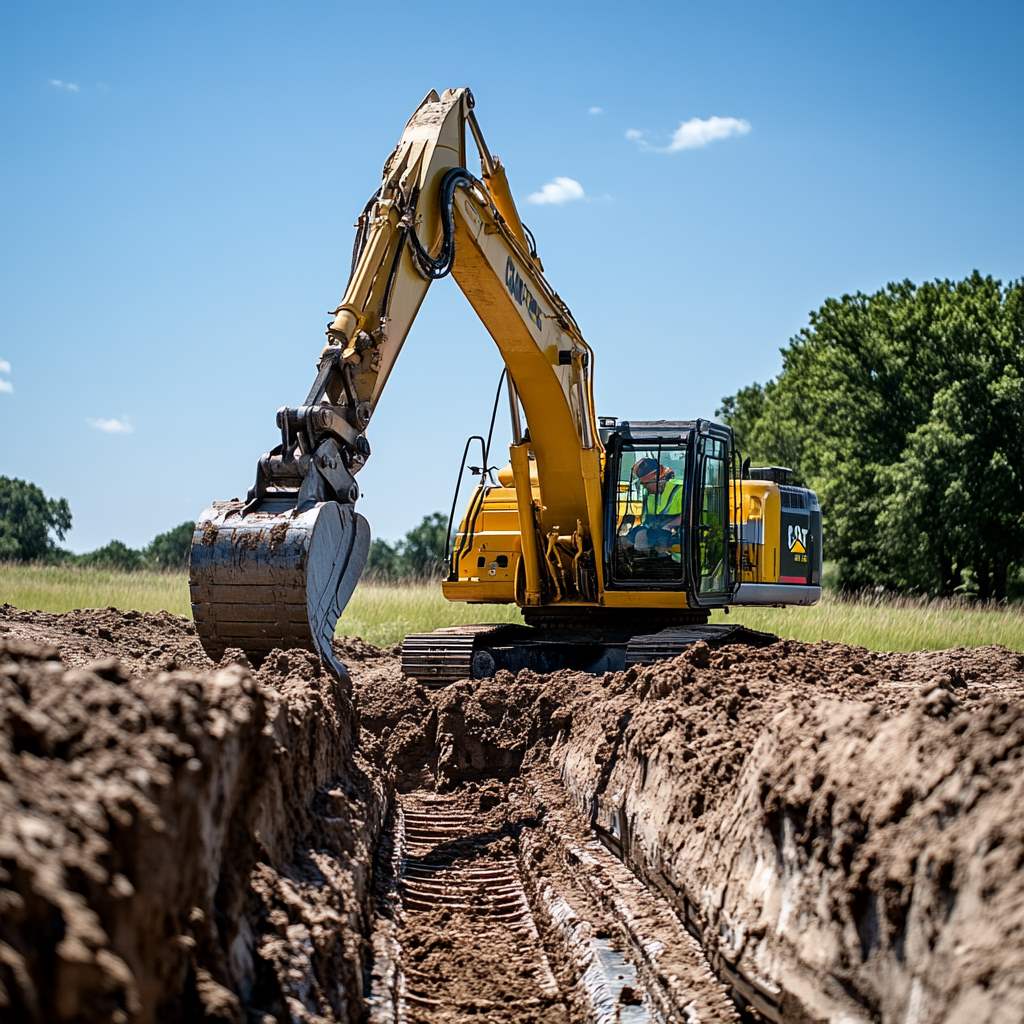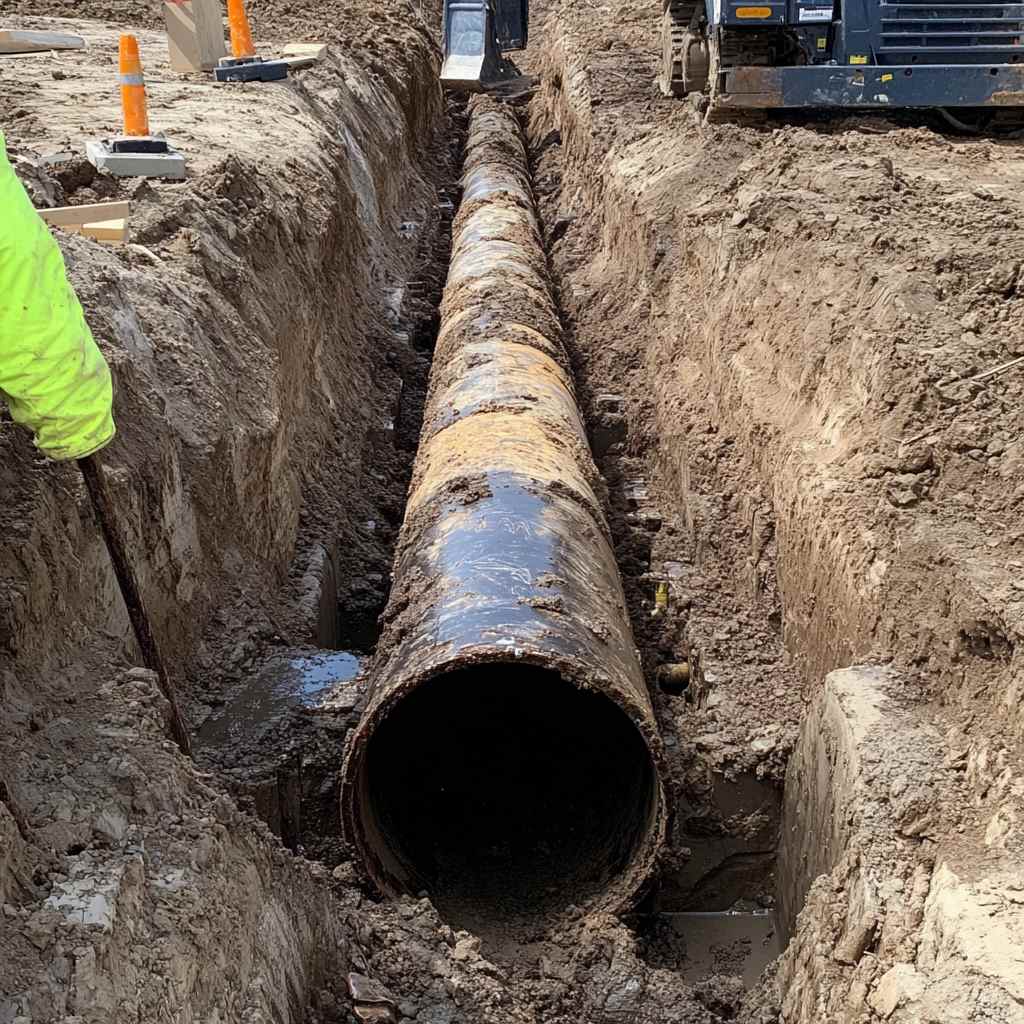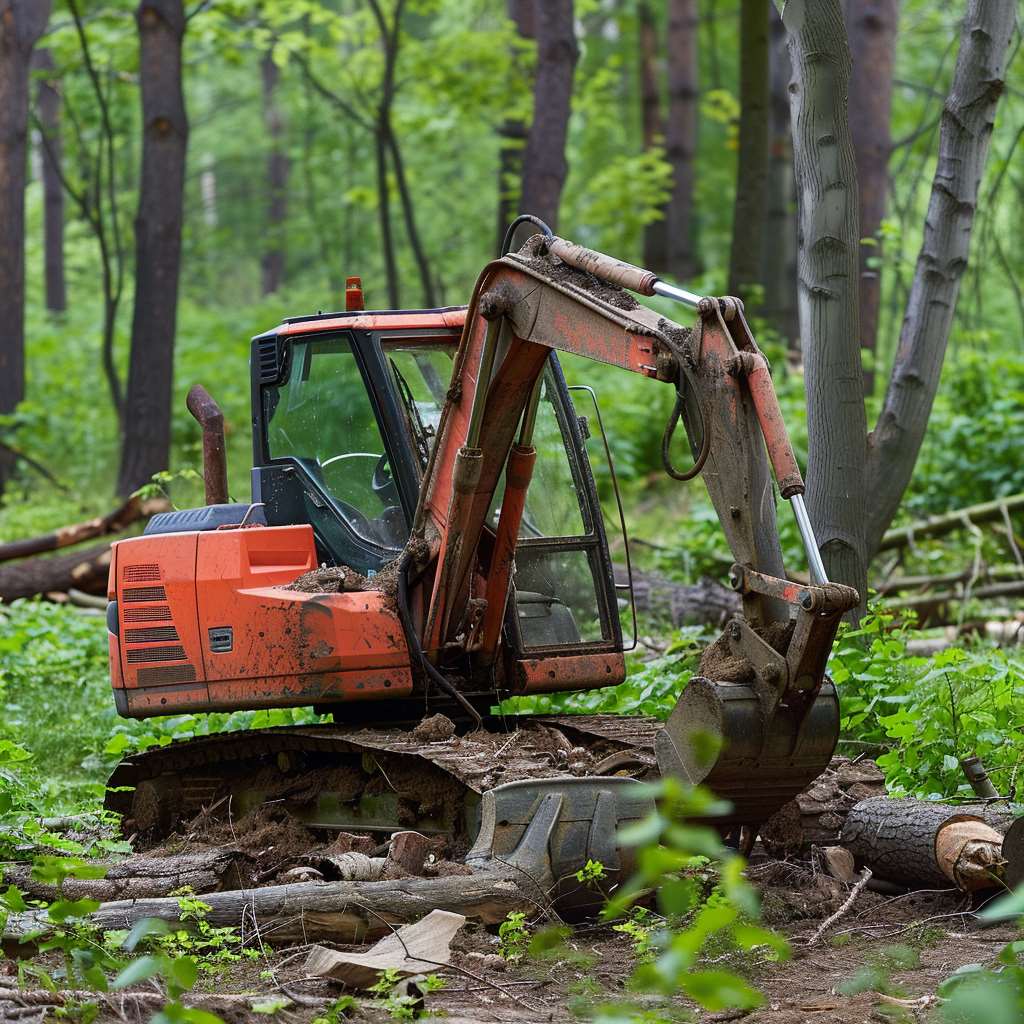Tips for Digging a Trench for a Water Line
When prepping your property for a water line installation, the trench you dig matters just as much as the pipe that goes into it. At In-Depth Excavation, we’ve seen that a little planning upfront can save a lot of headache later. Whether you’re replacing a line or laying one down for the first time, the trench needs to be the right size, in the right place, and dug with the right tools.
Let’s walk through what goes into getting that trench just right, without turning your yard into a guessing game.
Determining Trench Depth and Width
The trench depth and width for a water line installation will depend on the specific requirements of the project. For example, a French drain typically requires a trench that is 6-12 inches wide and 18-24 inches deep for a 4-inch pipe.
Electrical wiring trenches are typically shallower at 6 inches deep and 4 inches wide, while drainage trenches can be deeper at 18 inches and wider at 9 inches. It’s important to consult the project plans or seek professional advice to determine the appropriate trench dimensions for the water line.
Our local plumber buddy out in Lake Stevens, Anthony at Elite Plumbing & Sewer had to say
“The average cost for main water line replacement ranges from $646 to $2,824, with most homeowners spending around $1,714. Expect to pay around $75 to $150 per linear foot for installation.”
These numbers can change depending on soil conditions, length of trench, and how easy the area is to access. It’s always worth getting a quote before you dig, especially if you’re hiring both a plumber and an excavation team.
Trenching Tools for Digging
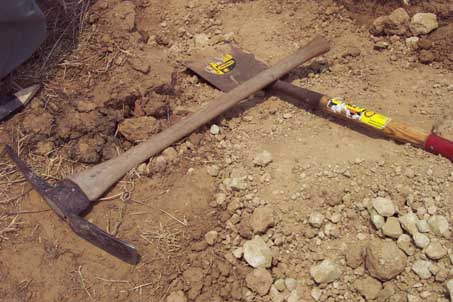
For smaller projects, hand tools give you more control and can be perfect for short runs or tight spaces. Some of the go-to options include:
-
Trenching shovels – narrow and shaped for vertical cuts
-
Pick mattocks – good for loosening rocky or compact soil
-
Drain spades – help shape clean edges
-
Grub hoes – effective for chopping into clay-heavy ground
-
Landscaping rakes – useful for leveling and clean-up
But if you’re dealing with a longer trench or rougher terrain, renting a trenching machine is a smart move. These machines cut down on digging time and help keep trench depth consistent. Just make sure the machine’s settings match the specs of your trench, too shallow and you’ll be redoing work; too deep and you’re wasting time and material.
Backfilling the Trench
Once your line is set, don’t rush the backfilling process. This step is key to the long-term success of your installation. The trench should be filled in layers, starting with soft soil around the pipe to protect it, followed by heavier fills to support the surface.
Use a compactor if possible. Compacting each layer as you go helps prevent future sagging or shifting. If you skip this step or rush it, you might end up with a trench that settles unevenly, leading to stress on the water line or surface dips in your yard.
We’ve seen it too often, what looks good today turns into tomorrow’s repair job because the backfill wasn’t done right.
| Trench Depth | Trench Width | Trench Excavation | Trenching Tools | Digging a Trench by Hand | Trenching Machine | How to Backfill a Trench for Water Line |
|---|---|---|---|---|---|---|
| Depends on water line requirements | Properly backfill the trench to ensure the stability and longevity of the water line installation | Consider using trenchers for efficient excavation | Trenching shovels, pick mattocks, drain spades, grub hoes, landscaping rakes | Use trenching shovels, pick mattocks, drain spades, grub hoes, landscaping rakes for smaller trenches | Consider renting a trenching machine for larger projects or challenging terrain | Properly backfill the trench to ensure stability and longevity of the water line installation |

Consulting us at In-Depth Excavation when making adjustments to your home and land can help expedite any issues giving you a clearer peace of mind, leaving it in our experienced hands.
Trenchers are ideal for quickly and evenly excavating trenches, making them a great choice for larger projects. On the other hand, hand tools offer more precision and control, making them suitable for smaller trenches that require meticulous digging.
Trenching doesn’t have to be a headache. With the right prep, the right tools, and the right people on your side, you can dig smarter, not harder. If you’re planning a trench for a new water line, or if you’re running into questions partway through the job, give us a call. At In-Depth Excavation, we know what lies beneath, and we’re here to help you move forward without guesswork.
Remember to follow proper techniques for digging and shaping the trench, and double-check the dimensions to ensure accuracy before proceeding with the water line installation. Finally, backfill the trench carefully to provide stability and longevity for your water line system.
We’ve gone over some seasonal tips aligned with water lines, in our blog article Winter Drainage Tips for Snohomish Residents.
FAQ
Trenchers are types of equipment designed to excavate straight trenches that are smooth at the sides, flat at the bottom, and usually deeper than they are wide.
Trenchers can dig trenches more quickly and evenly than excavators.
Walk-behind trenchers are around 12-31 horsepower and better for softer terrain or trenches that require more precision. Ride-on trenchers are around 49-131 horsepower and are better for long, deep trenches, rocky terrain, or pavement.
Chain trenchers are suitable for cutting deep, narrow trenches and are ideal for drainage.
Wheel trenchers are designed for rocky soil or pavement and are commonly used for road repair.
Micro trenchers are suitable for laying fiber optic cables.
When choosing the size of the trench, consider the depth and width of the trench needed for the water line installation.
Trenching shovels, pick mattocks, drain spades, grub hoes, and landscaping rakes are commonly used hand tools for digging smaller trenches.
Before digging a trench, check with the local municipality for any underground obstructions such as pipes or wires.
When using hand tools, start by loosening the soil with a pick mattock or grub hoe, then use a trenching shovel to shape the walls of the trench.
When using a trencher, wear PPE and follow operating instructions and safety procedures.
Determine the appropriate trench depth and width based on the specific requirements of the water line installation.
For a 4-inch pipe for a French drain, the trench should be 6-12 inches wide and 18-24 inches deep.
